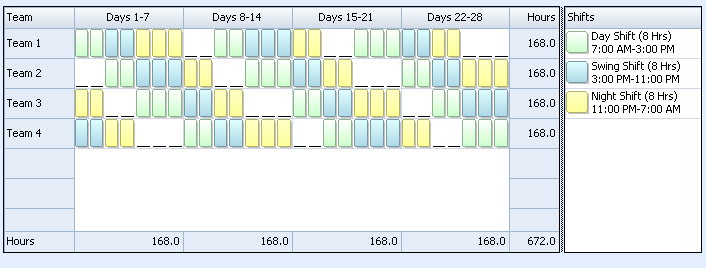A rotating shift is a work schedule where people move through a cycle of working during day, swing, and night shifts. The goal of this schedule is to distribute the stress of the least desirable swing and night shifts across a workforce. Some workplaces prefer a fixed shift schedule where people work the same shift on a consistent schedule, while others may rotate shifts so that no one is stuck with the least desirable ones all the time. There are some health risks to such schedules that must be balanced when developing them.

A work shift from afternoon to late evening. ‘a man who works swing shifts’. More example sentences. ‘So I would go to college in the daytime, rehearsing on the swing shift and performing and working at the brewery.’. Rotational shift work is the type of shift work where your employer has broken up the work hours of the day into different sections. These sections are traditionally the 1st (early), 2nd (late) and 3rd (night) shift. The swing shift can also be included in the “rotation” too depending on your workplace.
In a simple example of a rotating shift schedule, an employee might spend five days working days, take three days off, spend four days working swing shifts, take three days off, spend four days working nights, take four days off, and then repeat the schedule. Rotating schedules are often used in facilities that require 24-hour employee coverage, such as factories, power plants, and hospitals. They can be structured in a number of different ways, and a version is also seen on ships while they are at sea.
For the employee, transitioning between schedules on a rotating shift can be stressful. People tend to get less sleep, and this can contribute to the development of health problems, particularly digestive problems. Setting a schedule and sticking to it can help people manage the transition between shift schedules, but not all employees are able to do this.

One advantage to a rotating schedule is that it can provide people with opportunities to do errands, spend time with friends and family, and engage in other activities that might be challenging on a fixed shift. For example, someone who works nights all the time on a fixed shift would not be very active during the day. He might find it hard to complete many tasks that require being awake during the daytime, such as shopping at businesses that are not open in the evenings.
1st Shift Hours


Swing Shift Work Schedules
When employers establish schedules, they must weigh their needs, employee preferences, and health concerns. It may be possible to adjust a rotating shift schedule for an employee who has difficulty with it. Employees are also sometimes permitted to trade shifts with each other to design a schedule that meets their needs or if they need to be free on specific days. Supervisor approval may be required for a shift swap, especially if it would have the effect of putting an employee into overtime in a given week.

